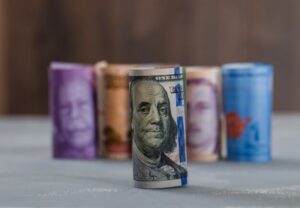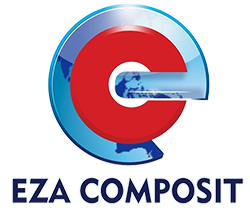Cost of Capital: Concept, Types RAS Exam Preparation
Contents
Thus, the implicit cost of retained earnings is the return which could have been earned by the investor, had the profit been distributed to them. If a firm wants to raise funds by the issue of security then it must offer a return in the form of interest or redemption premium or expected dividends to the investors. Now, the investor before making a decision to invest the funds in the firm will compare the returns offered by the firm with the returns he can get elsewhere. In other words, the investor will be ready to supply the funds only if the firm offers a return which is at least equal to the opportunity cost of the investor.
The preference dividend is payable as an appropriation of profit unlike interest on debentures which is a charge against profits. Except the retained earnings, all other sources of funds have explicit cost of capital. Capital is any amount of money used to finance a business or its operations, and it can include various sources and methods. These sources may include traditional debt and equity financing or owner financing. Cost of production or cost price or production costs can be calculated by adding all direct and indirect costs of a manufacturing unit.

The debentures are issued at a discount of 5% and the flotation cost is estimated to be 1%. Find out the cost of capital of debentures given that the firm has 40% tax rate. Usually, the equity is the risk capital which is invested to generate higher returns than debt.
The value of a company’s capital would include everything it owns and all of its money. The capital should also account for the liabilities, and the liabilities should be subtracted from the assets. But an accountant who is in charge of the company’s daily budget would only count the cash on hand as capital. The government of India has launched many roles in order to reduce the cost of production for producers.
Weighted average cost of capital (WACC)
This might be a result of free service or setting up free infrastructure for the producer. These examples have cleared the meaning of cost of production in your mind. Sam purchases a sewing machine for 5000 INR, he spends 300 INR on transporting the machine to his home. Here the cost of production of sewing machines for Adi is 5300 INR, i.e., original cost of sewing machine plus the cost of transportation. It helps to evaluate various sources of finance and select the most profitable one.
The second part is the growth rate, g, which refers to capital gains yield. In case, the debt is repayable only at the time of maturity and there is no annual amortization then Equation 5.3 will not contain the second element i.e., COPi/(1 + kd)i. Equation 5.3 is to be solved for the value of kd, which will be after tax cost of capital for debt. The basic assumption of the cost of capital concept is that the business risk of the firm is unaffected by the proposal being evaluated at the cost of capital.
When an individual investor buys a stock, that person gives equity capital to a company. When a business makes its first public offering, it makes the biggest splash for getting equity capital . In 2021, IPOs of some new companies like Zomato, Paytm, Nykaa, etc were launched. Most of the time, all forms of equity will be set up as shares of the company’s stock. Private equity comes from a small group of investors, while public equity comes from selling shares of a company on a stock exchange.
Management will analyse data using specific values-based principles, influencing how expenses are established, services are provided, money is earned, and risks are absorbed. The cost to fund a specific project is historic expenses that have already been accrued. They have a performance assessment in addition to normal and/or default prices. It is also known as weighted average cost of capital and composite cost of capital.
Sometimes people misinterpret the cost of production or production costs as manufacturing costs. But there is a difference https://1investing.in/ between Production and manufacturing cost. While the cost of production is an aggregated cost of different costs.
Corporate Banking – Services, Clientele, Products & Pricing
Other forms of financing include grants, gains on investment capital, retained earnings, forward payment agreements on capital, and accrual financing contracts. Let’s explore the two methods calculating the cost of the capital – marginal cost of capital and weighted cost of capital. The cost of retained earnings must be considered as the opportunity cost of the foregone dividends. From the point of view of equity shareholders, any earning retained by the firm could have been profitably invested by the equity shareholders themselves, had these been distributed to them.
It includes all direct and indirect costs of manufacturing the product. Read the blog to the end to get your answers with real-life examples. Cost of Retained Earnings may be simply defined as opportunity cost of additional dividends that shareholders would have received, if the retained earnings were distributed as dividends and not retained. Cost of capital is the indication of expectations of shareholders regarding returns from their investments and may not necessarily be in form of cash cost every time. ABC is a method of defining and transferring overhead costs from each department to real expense items such as products and services.
This is defined in other words as the corresponding costs of the additional funds the organization has to collect. The idea of the cost of capital is crucial data needed to calculate the hurdle rate for a project. When starting a large project, a business must determine how much revenue will be needed to cover the project’s costs and sustain future profitability for the business. From the viewpoint of an investor, the cost of capital is an evaluation of the potential return on the purchase of stock shares or any other investment. This is an estimate, so best- and worst-case scenarios may be included. To assess if a stock’s price is reasonable given its potential return, an investor may consider the volatility of a company’s financial results.

However, there is one source of funds which does not involve any payment or flow i.e., the retained earnings of the firm. The profits earned by the firm but not distributed among the equity shareholders are ploughed back and reinvested within the firm. These profits gradually result in a substantial source of funds to the firm. Had these profits been distributed to equity shareholders, they could have invested these funds elsewhere and would have earned some return. This return is foregone by the investors when the profits are ploughed back. Therefore, the firm has an implicit cost of these retained earnings and this implicit cost is the opportunity cost of investors.
What is Weighted Average Cost of Capital (WACC)?
It encompasses the cost of compensating the debt investors, preference shareholders and the equity shareholders. So, in order to calculate the WACC, there must be a system of assigning weights to different specific cost of capital. The following considerations are worth noting while assigning weights to specific cost of capital to find out the WACC.
- Weighted average cost of capital is the weighted average cost of equity and debt capital, where weights are the amount of capital raised from each source.
- ABC is a method of defining and transferring overhead costs from each department to real expense items such as products and services.
- ABC Ltd. issues 15% Preference shares of the face value of ` 100 each at a flotation cost of 4%.
- Thus, the implicit cost of retained earnings is the return which could have been earned by the investor, had the profit been distributed to them.
- Authentic Databases, Books, Journals, Practice Modules, Exam Platforms, and More.
These cash flows are then discounted at the cost of capital to find out their present value. It should be noted that this cost of capital which is used to discount the cash flows (after-tax) should also be after-tax only. If the firm is using IRR technique, then the cut-off rate should also be taken on an after-tax basis.
Components of Cost of Capital
The opportunity cost of the investor may be defined as the return foregone by the investor on the alternative investment opportunity of the same or comparable risk. So, the cost of capital of the firm may be defined as the opportunity cost of the suppliers of funds i.e., the investors. Equity shares or equity cost of capital is invested by the investors and owners towards the company’s capital. The Equity capital is also known as ‘equity or ‘share capital and is the total of the number of equity shares multiplied by its face value and forms the company’s equity share capital. The potential investors of equity share capital must estimate the expected stream of dividend from the firm.
It is also a good measure for the company’s new stock issuance when it decides to raise more capital in preferential shares, debentures etc. The WACC metrics provide the investors with the weighted and capital debt costs in an analysis of the company’s balance sheet. The firm must have a cost of capital that is weighted to reflect the differences in various sources used.
Another important factor to be considered here is capital budgeting and payback period. Here, the payback period is nothing, but the time taken to recover the investment amount. Read “What Is Capital Budgeting? Process, Calculation and Example’ to know the process and calculations. Business risk is determined by the capital budgeting decisions that a firm takes for its investment proposals. So, if a firm selects a project that has more than normal risk, then it is obvious that the providers of capital would require or demand a higher rate of return than the normal rate.
By interpolating between 8% and 9%, the value of kd comes to 8.68%. As the default risk of the firm increases the cost of bonds and debentures will also increase. For reinvestment within the firm for increasing further the subsequent returns. “We understand the Reserve Bank of India and Sebi are not comfortable letting key Indian institutions come under the scrutiny and inspection of overseas market regulators. They think it’s a jurisdiction issue, and boils down to a regulatory overreach,” a senior banker told ET. Every Sunday we email people like you with top tips, insights and opportunities to manage your finances and build your online business.
Cost of Equity – Capital Asset Pricing Model (CAPM)
To a finance professional, capital usually signifies assets which can be liquidated to get cash or cash equivalents. In other words, it is money that you have on hand that you can use for short-term or long-term requirements. In the big picture, different types of cost of capital capital is all the money currently in circulation and being traded for immediate needs or long-term wants. But capital is often looked at in terms of how it is used now and how it will be used in the future to reach financial and business goals.
Different types of capital, such as debt, equity, stock, etc. are used in different amounts and for different costs. While we evaluate the cost of additional funds raised, it is called the marginal cost of capital. Marginal cost is the cost of capital that is marginal and may include a basic interest rate cost structure. The weighted average cost of capital or WACC formula results are coupled with indicators like the after-tax cost of debt and others to provide the company’s best assessment under review.


Leave a Reply
Want to join the discussion?Feel free to contribute!